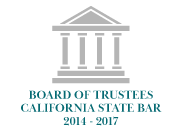When creating a trust, one of the questions you have to answer is how you want the trustee to make distributions to beneficiaries. The trustee has a legal obligation to follow the provisions stated in the trust when making decisions about distribution requests. This is why you see the HEMS Standard in many trusts. It creates guidelines for a trustee limited to an ascertainable standard, helps prevent tax consequences, and protects assets.
What Is the HEMS Standard?
The HEMS standard is used in many trusts to establish how the assets in the trust can be used. HEMS stands for health, education, maintenance, and support, and this acronym outlines the types of expenses that qualify for a distribution. Additionally, it provides guidance for the trustee while giving them discretion when making trust distributions.
Health
Health expenses encompass a broad range of procedures and products for medical and dental care as well as preventative measures and cosmetic services. They include the following:
- Allergen cleaning services
- Alternative medicine procedures, such as acupuncture and massage therapy
- Annual medical and dental exams
- Cosmetic surgeries
- Emergency medical and dental treatment
- Exercise equipment and home gyms, including renovations to accommodate the equipment
- Home healthcare and long-term care expenses
- Memberships to gyms, spas, and golf clubs
- Mental health counseling and support, including extended vacations and retreats to address mental health concerns
- Insurance premiums for health, dental, and vision plans
- Substance abuse programs, including in-patient rehabilitation facilities
- Supplements for healthcare maintenance and disease prevention
- Transportation and mobility services for individuals with physical disabilities and limitations
- Treatment for psychiatric conditions
- Vision exams, corrective lenses, glasses, and vision correction surgery
Education
Education includes expenses for public and private schools at the elementary and secondary levels, college, technical schools, and career training. Education can be broadly defined to include not only tuition, but also activities that have educational value. Some of the expenses allowed can include:
- Daycare for dependents when parents are attending classes or studying
- Extracurricular activities, such as school-sponsored sports and clubs
- Graduate school expenses
- Graduation expenses, including announcements and attire like robes
- Private tutoring
- School-related expenses like books, computers, room, and board
- Special events and items like prom and class rings
- Study abroad programs and travel expenses incurred during such programs
- Support in between semesters and during unpaid internships
- Tuition for private or public schools at all levels
- Uniforms and school clothes
Maintenance and Support
Expenses that qualify as maintenance and support tend to overlap. These expenses are usually intended to ensure the beneficiary can continue living the lifestyle they are accustomed to. They include the following types of expenses:
- Continuation of charitable contributions, gifting for special occasions, and regular vacations, if that has been part of their lifestyle
- Down payment on a new home
- Funds to start a new business
- Home repairs
- Insurance premiums
- Some legal fees
- Living expenses for beneficiaries who work in low-income vocations that benefit the community
- Mortgage payments or rent
- Property taxes
- Support for family members
- Vehicle repair and maintenance
These lists of expenses are examples of what can be considered for distribution under the HEMS Standard. However, it is important to note that what qualifies for distribution isn’t necessarily clearly defined.
It’s also important to carefully consider the language used in the trust. For example, the difference between “shall distribute” and “may distribute” is more than two letters. The latter gives the trustee more discretion when making decisions.
Why Use the HEMS Standard in Trusts?
The HEMS standard is popular for several reasons, most notably for how it protects all parties involved — the trustee, beneficiaries, and the assets within the trust.
Tax Purposes
The HEMS Standard is an Internal Revenue Service “safe harbor” rule. The IRS cannot apply estate taxes to property within a trust after the beneficiary or the individual who established the trust dies. The HEMS Standard provides additional protection if the trust beneficiary is also the trustee. The value of the trust’s assets cannot be considered to be part of the beneficiary’s gross estate for federal estate taxes. Using the HEMS Standard, the trustmaker can keep their taxable estate and the trust’s property separate.
Asset Protection
The HEMS Standard creates legal limitations for how the trust can be used. This, combined with a spendthrift provision, protects beneficiaries and the trust from creditors. The trust is an asset protection tool as well, because creditors cannot access the trust to collect debts. They cannot sue the beneficiary with the expectation that the trust will pay for the damages, thus creating built-in asset protection so that it is not depleted.
Ambiguity in the language gives the trustee some flexibility when making decisions about the beneficiary’s requests. For example, although vehicle repair and maintenance expenses may fall under the Maintenance and Support category, the trustee may choose to deny a request if they believe the repair cost is not in the beneficiary’s best interest because it depletes the assets in the trust.
How Does the HEMS Standard Work?
Seeing the HEMS Standard in action will help demonstrate its value. The following examples illustrate how the HEMS Standard works for both the trustee and the beneficiaries while protecting the trust assets against premature depletion.
Scenario 1: Providing for Children
In this example, a father decides to leave a gift for his children but doesn’t want to hand them a lump sum of cash. Instead, the father puts the money in a trust and includes the HEMS Standard. The trustee can then disburse funds to the children for doctor’s visits, school tuition, and room and board. This arrangement gives the father a sense of security since he knows the children won’t be able to misuse the money and drain the assets in the trust.
Scenario 2: Providing for a Spouse
In this example, a married couple creates a trust and puts part of their estate into the trust with the intent to provide healthcare, education, and support for the surviving spouse. The trust can then revert to other beneficiaries after the surviving spouse’s death. This can be useful in second marriages to ensure the surviving spouse has the financial support they need while still protecting the interest of children from the first marriage.
Scenario 3: Protecting Assets from Lawsuits
In this example, someone sues a beneficiary and wants the trust to pay for damages. The trustee can easily deny the claim — lawsuits are not listed as a covered item in the HEMS Standard because it doesn’t qualify as a health, education, maintenance, or support expense. In this way, it protects beneficiaries from plaintiffs and creditors trying to access the assets in the trust. The trustee has a fiduciary responsibility to protect the trust beneficiary, even if the trustee and beneficiary are the same person.
Scenario 4: Protecting Assets from Premature Depletion
A couple creates a trust and makes their adult children the beneficiaries of the trust. The children ask the trustee to distribute money for a family vacation they take every year as a big group. Although these group vacations are typically week-long trips to the beach or Disneyland, they decide to go to a luxury resort in the Maldives. The trustee denies the request, arguing that the vacation will prematurely deplete the assets in the trust.
HEMS Standard in California Estate Planning
HEMS is a powerful tool in California trusts. Not only does it protect against unnecessary taxation, but it also keeps the assets out of the hands of creditors.
Leaving a legacy for your loved ones is a noble gesture, and you want to make sure their needs are met. Creating a trust is one way to ensure they have the resources they need to take care of expenses. A qualified estate planning attorney can help you discuss whether a trust is right for you and create one that suits your personal situation.
References:
Trust & Will (n.d.) “Distribution of Trust Assets to Beneficiaries – What You Need to Know”
Independent Trustee Alliance Conference (May 13, 2021) “But What’s an Ascertainable Standard? Clarifying HEMS distribution standards and other fiduciary considerations for trustees”
Wealth Director (Sept. 10, 2013) “The Limits of Discretion: Trust Distributions for Health, Education, Maintenance and Support”








